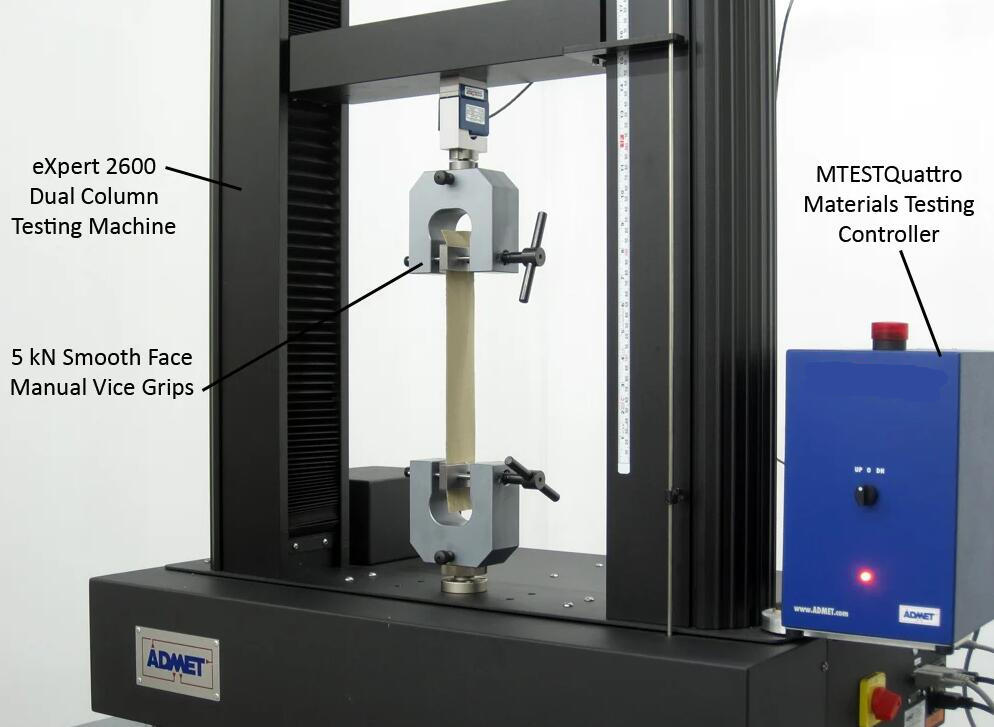- Qinsun Instruments Co., Ltd.
- Tell:+86-21-6780 0179
- Phone:+86-17740808215
- Address:No. 2578 Minhang District Gu Dai Road, Shanghai
- Contact:Mr. Li
- QQ:846490659
What is ASTM D5034 for breaking strength of textile fabrics?

ASTM D5034 - Standard Test Method for Breaking Strength and Elongation of Textile Fabrics (Grab Test):
Introduction:
ASTM D5034 is a standard test method developed by ASTM International, formerly known as the American Society for Testing and Materials. This method is used to determine the breaking strength and elongation of textile fabrics, specifically using the grab test technique. The breaking strength of a fabric is a critical parameter that assesses its ability to withstand applied forces without tearing or breaking.

Test Procedure:
The ASTM D5034 standard provides detailed procedures for conducting the grab test. Here is a concise overview:
Specimen Preparation:
- Fabric specimens are prepared by cutting them into a specific shape, typically a rectangle.
- The dimensions of the specimen are defined in the standard to ensure consistency in testing.
Clamping the Specimen:
- The fabric specimen is securely clamped in the jaws of the testing machine. The clamps are designed to minimize slippage during testing.
Applying Force:
- Tensile force is applied at a constant rate until the fabric specimen ruptures or breaks.
- The rate of loading is also specified in the standard to maintain uniformity across tests.
Recording Data:
- The maximum force applied before the fabric breaks is recorded as the breaking strength.
- The elongation of the fabric at the point of rupture is also measured and reported.
Significance and Application:
The breaking strength and elongation values obtained through ASTM D5034 are crucial for several reasons:
Quality Control: Manufacturers and suppliers use these measurements to ensure that textile fabrics meet the specified strength requirements. This is vital in maintaining consistent product quality.
Product Development: Designers and engineers use breaking strength data to develop fabrics tailored to specific applications, such as apparel, industrial uses, or medical textiles.
Regulatory Compliance: ASTM D5034 is often referenced in industry standards and regulations, making it a widely accepted method for assessing the breaking strength of textile fabrics.
Research and Development: Researchers use this standard to evaluate the performance of new textile materials and to compare different fabrics in terms of strength and elongation properties.
Key Parameters Measured:
Breaking Strength:
- The maximum force applied to the fabric before it breaks.
- Measured in force units (e.g., Newtons or pounds-force).
Elongation:
- The percentage increase in the length of the fabric at the point of rupture.
- Calculated as the change in length divided by the original length, multiplied by 100.
Instrumentation and Equipment:
ASTM D5034 recommends the use of a universal testing machine equipped with appropriate grips and fixtures. This ensures accurate and repeatable testing conditions.
Variations and Related Standards:
While ASTM D5034 specifically covers the grab test method, there are other ASTM standards related to the tensile testing of textiles. These may include strip tests, trapezoid tests, and others, each tailored to different types of fabrics and intended applications.
In conclusion, ASTM D5034 is a widely recognized and accepted standard for determining the breaking strength and elongation of textile fabrics using the grab test method. The information obtained through this standard is invaluable for quality control, product development, regulatory compliance, and research purposes within the textile industry. Manufacturers, researchers, and regulatory bodies rely on ASTM D5034 to assess and ensure the mechanical performance of textile fabrics, contributing to the overall quality and safety of textile products in various applications.
What is the equipment for testing the breaking strength of textile fabrics?
The equipment commonly used to test the breaking strength of textile fabrics is known as a textile tensile tester or Fabric Breaking Strength Tester.This equipment measures the breaking point of a material under force to assess its tensile properties and strength.
A tensile tester usually consists of a fixture system and a hydraulic or motorized drive system responsible for applying the force. To test the breaking strength of a textile fabric, the sample first needs to be clamped and the fixture will hold the ends of the material. The tester then gradually increases the stress on the material by applying a constant tensile or compressive force until the material breaks.
During the test, the tensile tester records the force applied to the sample and the change in sample elongation, and this data can be used to calculate the breaking strength, modulus of elasticity and other relevant mechanical properties of the fabric. Typically, the test results are presented in the form of graphs or numerical values for analysis and comparison.
It is important to note that different types of textile fabrics may require different fixtures and test parameters to ensure accurate and repeatable test results. Therefore, before conducting a breaking strength test, it is recommended to refer to the relevant test standards or consult a professional organization to determine the appropriate test method and equipment applicable to a particular textile fabric.





